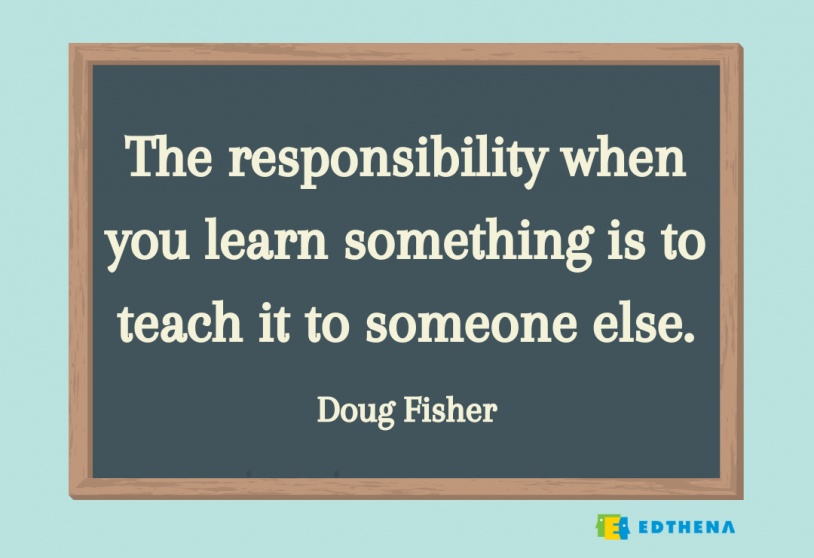Doug Fisher Explores Creative, Proven Student Assessment Tools
-
Teachers are exploring the best ways to approach student assessment in the era of technology.
-
Nontraditional and creative checks for understanding can help educators gather essential information.
In a world of technological resources, teachers find that student assessment is becoming more challenging as students can find answers at the click of a button. Co-author of The Distance Learning Playbook and literacy and leadership expert Doug Fisher has implemented new techniques to informally check for understanding in nontraditional ways as a K-12 teacher.
Doug Fisher was interviewed by Edthena founder and CEO Adam Geller for the teacher professional development blog PLtogether. You can watch the interview segment above (the conversation regarding student assessments starts around 5:33), and read some highlights below.
Is traditional assessment still the best way to check for understanding?
An important focus in classrooms is student assessment, with teachers continually monitoring what students know.
“How do we know if students are learning?” Doug Fisher asked. This is key to academic progress.
However, the unlimited amount of information online presents new challenges for accurately assessing students. Can traditional multiple choice tests and check for understanding techniques cut it in the modern technological era? Simply put, no.
Doug cited the plethora of TikTok videos that show how to cheat on every kind of test and stated, “We have to think of new ways.”
Accurate student assessment is still possible if you think outside the box
Doug Fisher currently implements various techniques to approach the new challenge.
 Having students employ universal responses requires them to answer simultaneously and live. For example, students can have cards or mini whiteboards where they write and hold up a response to a teacher’s question at the same time, avoiding copying of peers’ answers.
Having students employ universal responses requires them to answer simultaneously and live. For example, students can have cards or mini whiteboards where they write and hold up a response to a teacher’s question at the same time, avoiding copying of peers’ answers.
One universal response technique that can be implemented virtually is a ‘waterfall chat’. Waterfall chats are effective because students must give a response in a virtual chatbox all at the same time, eliminating copying and low participation.
“You ask [students] a question, give them thinking time, processing time, typing time… but nobody sends [an answer in the chat] until you say ‘waterfall’,” explained Doug.
This also helps students feel much safer in responding because their response is nested within others’ responses.
To take waterfall chats one step further, Doug Fisher asks students to select a peer response from the chat to reflect on. “Copy [the response], put it in the chat, and type why that resonated, why that struck you, why that was a surprise to you. [Students] really like doing that, and it is a good assessment as well.”
With waterfall chats, all students are engaged and participating.
Teach-back strategies can assist teachers in asynchronous learning
 Doug Fisher also sees the teach-back strategy as one of the most common forms of student assessment.
Doug Fisher also sees the teach-back strategy as one of the most common forms of student assessment.
‘Teach-backs’ are when students internalize the information they’ve learned and teach it to someone else.
“We are seeing all kinds of assessments where students are teaching back to their siblings, to their parents, to their grandparents, to the class, to a breakout room… the responsibility when you learn something is to teach it to someone else,” enthused Doug.
He stressed that the ability to see what a student chooses to teach back to others really highlights what resonates with that student. This strategy also helps identify errors and misconceptions, enabling a teacher to know what to address and where to go next.
Seeing this new time in teaching in an asset-based way, as a chance to experiment and try new things, Doug Fisher is confident in the innovations that will take place in the long-run.
If you missed part 1 of our chat with Doug Fisher about student engagement, read it here!
Enjoying this content? Visit PLTogether.org to find more of these interviews with various education experts.

